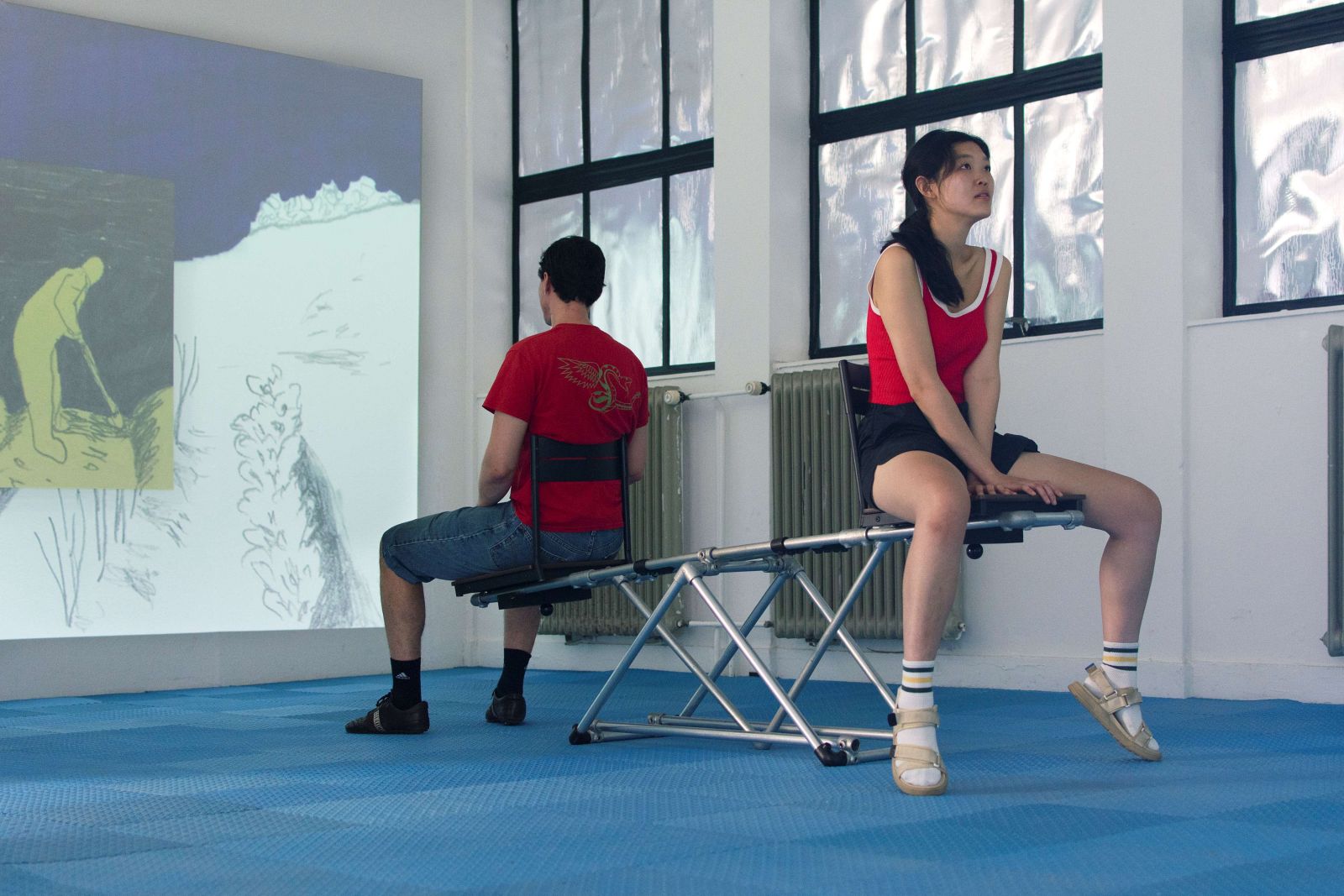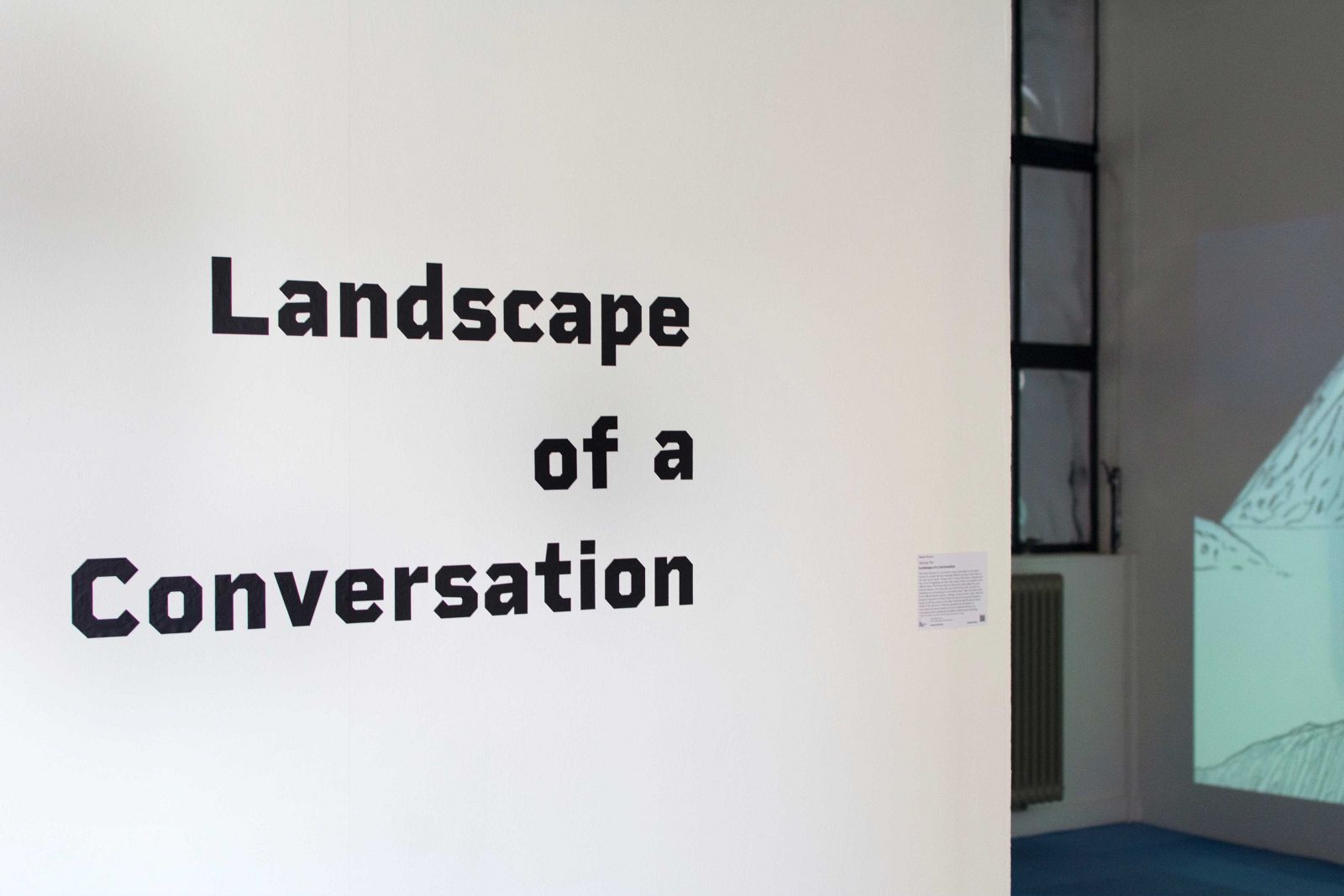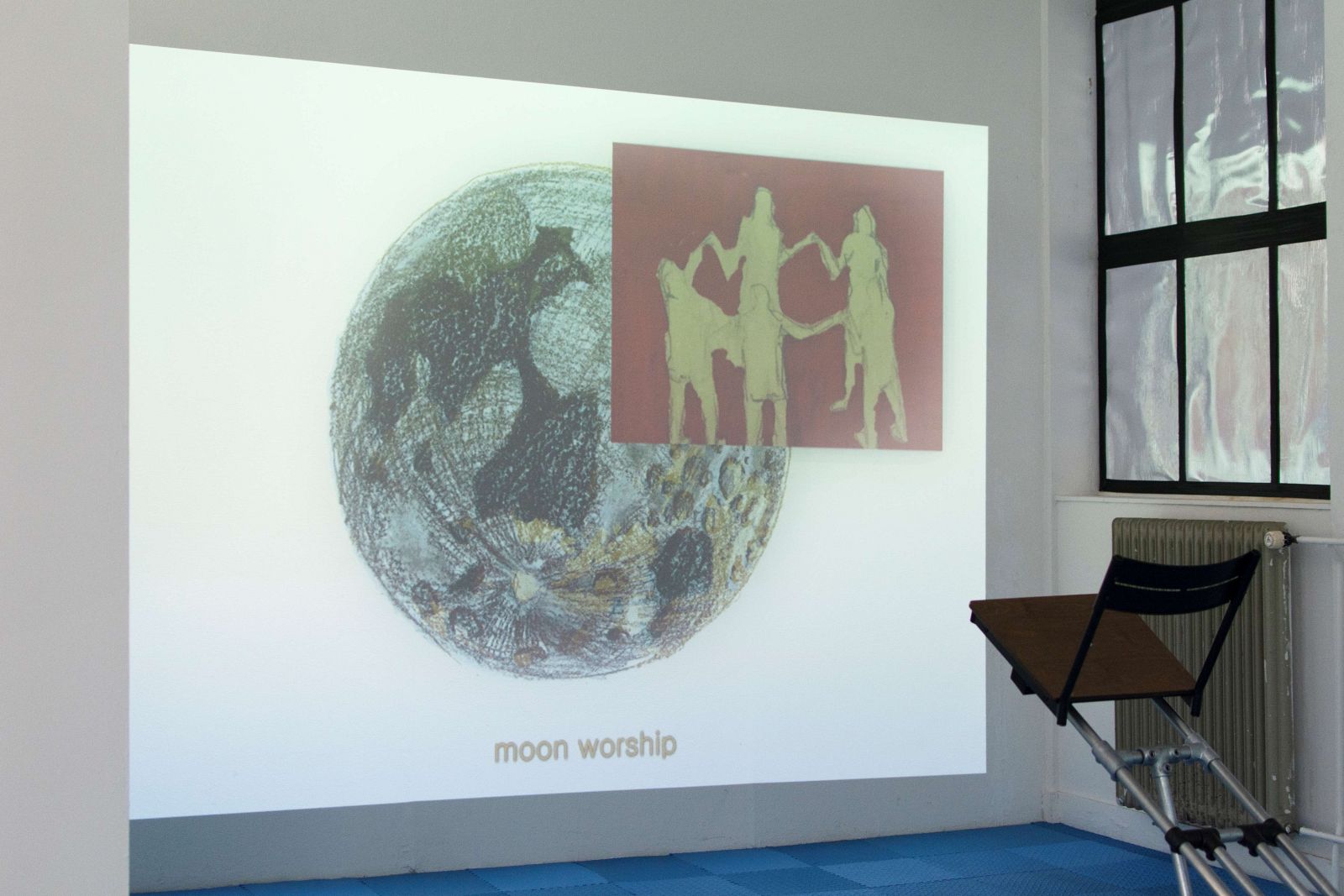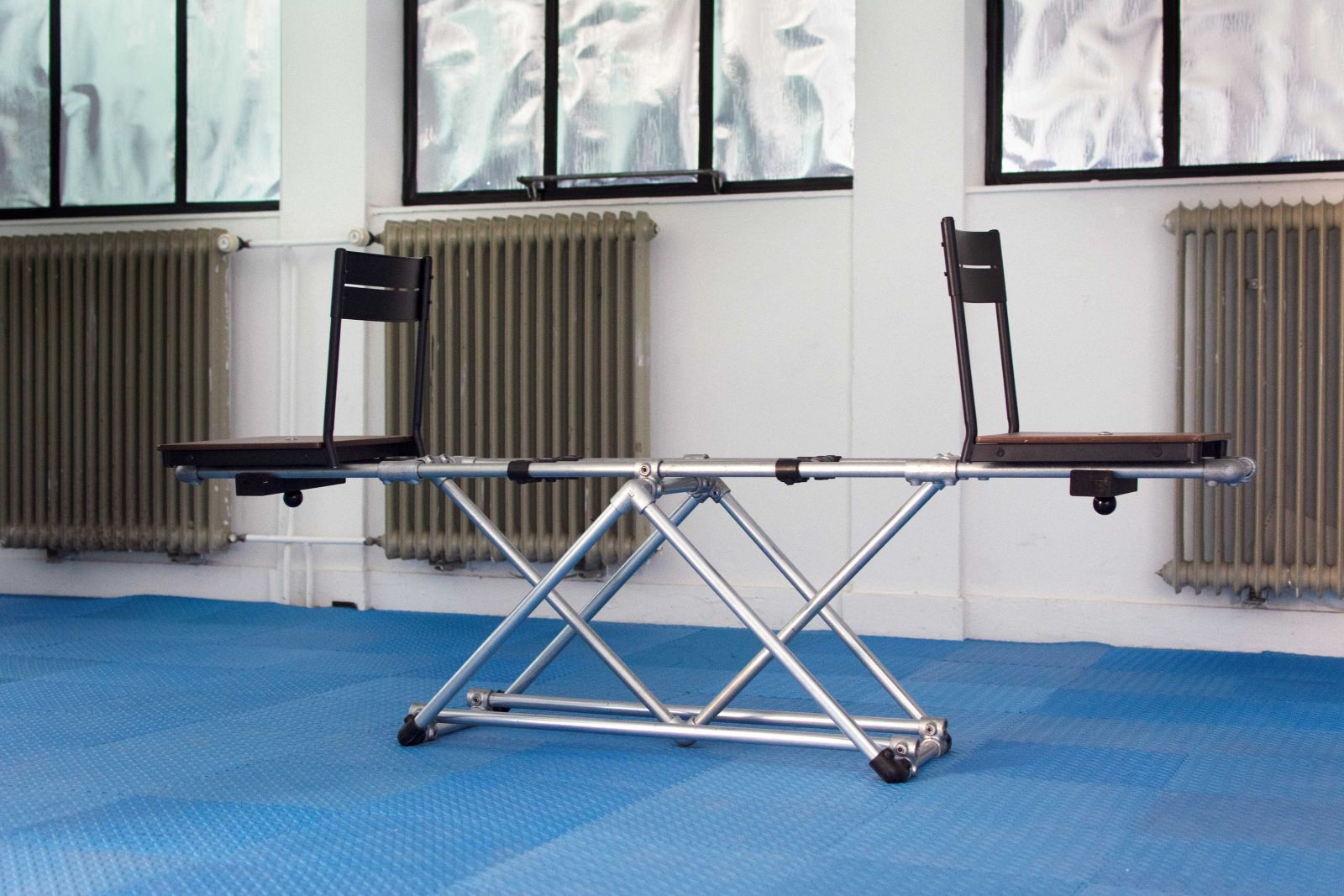
Jiyoung Yim
Keywords: Conversation, An ideal world, Altering objects
What would it look like to have a conversation with someone who has a different opinion to you? Would it be exhausting? Would it be possible to find a middle ground?
The work Landscape of a Conversation aims to materialize a conversation between two people who have seemingly different opinions to each other. In the work, the two books -Thomas More’s Utopia (16th century, England) and Heo Gyun’s Honggildong Jeon (late 16th century, Korea)- are animated in two different videos. Both books depict an ideal world, which reflects the socio-political situation of the time when each author lived. In the work, the two animations are participating in a conversation about “what is the ideal world” as two different/ similar opinions. Altering a seesaw seat (wip in Dutch) into a chair where two people are required to sit back to back and watch two projected animations, peo ple can feel the presence of the other mainly through the physical sense instead of the optical one. While the animations are the subject of a conversation, the seesaw represents the non-verbalized elements of a conversation such as reading the atmosphere, balancing and mediating.
With the question of how would it look like if the conversation was a landscape, audiences are in the space as a listener, mediator, or onlooker of these two seemingly different opinions from each book. By putting the audience into the setting, the work raise questions of "Can an inevitable disagreement of two ideas be the starting point of a new idea? Can an ideal world be the tool for inspecting the here and now? Can imagining an ideal world be a collective and playful process of how to live together?"



